In the software development world, Scrum is a highly regarded and widely practiced framework of product development. As a methodology in Agile, Scrum is a flexible, holistic development strategy that helps development teams work towards a common goal. Unlike traditional approaches, scrum teams are self-organizing and cross-functional.
Scrum is an iterative development process, where development includes several phases. In this article, we’ll discuss the detailed steps involved in scrum workflow.
Before getting started with Scrum workflow, first, let’s understand what Scrum is.
Scrum Workflow - Table of Contents
What is Scrum?
Scrum is a framework that addresses complex problems, while creatively and productively delivering products of the finest possible value. It is developed for teams who divide their work into goals, that can be completed within timeboxed iterations called sprints, which last 2- 4 weeks.
The scrum team tracks the progress of the project in 15-minute time-boxed meetings called daily Scrum. After sprint completion, the team holds a review meeting to demonstrate the work done and a retrospective to continually improve.
| If you want to enrich your career and become a professional in Scrum, then visit MindMajix - a global online training platform: "Scrum Training" This course will help you to achieve excellence in this domain. |
Let’s get to the next part of this “Scrum Workflow” article and learn about the important roles involved in the Scrum framework.
Scrum Roles
The core roles involved in the Scrum process are Product Owner, Scrum Master, and development team.
- Product owner - The product owner in the Scrum team is primarily responsible for working with the user group to determine the features to be included in the product release. They are the champions who manage the team and guide the project’s progress toward success.
- Scrum Master - The Scrum Master in the team is responsible for promoting and supporting Scrum. They guide the team, product owner, and business on Scrum and look for ways to fine-tune their practice. An effective scrum master profoundly knows how the work is being performed by the team and helps the team in optimizing their transparency and delivery flow.
- Development Team - The development teams are cross-functional and have the skills to deliver product increments. This team includes developers, testers, designers, etc., to have less dependency on the third party. All the members of the scrum team are self-organizing and ensure successful sprint completion by turning Product Backlog into increments of potentially releasable functionality.
[ Related Article: Scrum Master Roles and Responsibilities ]
Now that you have an idea about what roles are involved in Scrum, it’s time to learn Scrum workflow.
Scrum Workflow Steps
In Scrum workflow, the process is regularly customized based on the continuous feedback loops.
The below diagram depicts the step-by-step process involved in scrum workflow: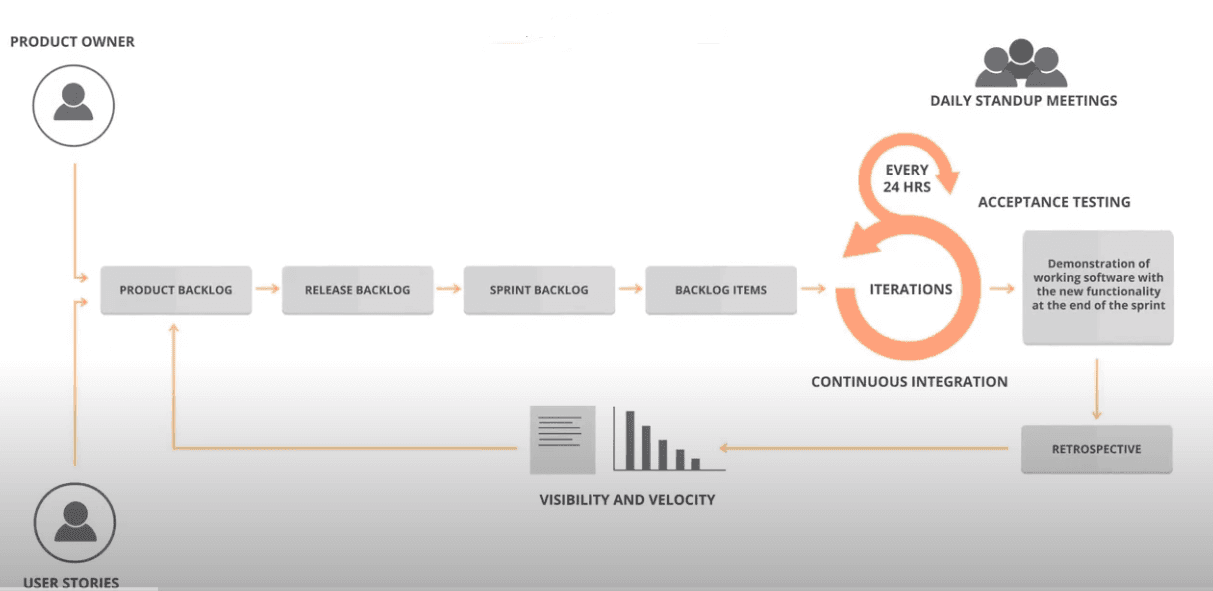
1. Product Backlog Creation
The first phase of the Scrum workflow process begins with the visioning phase, where the Stakeholders meet to decide the list of features that should be implemented and develop a product roadmap.
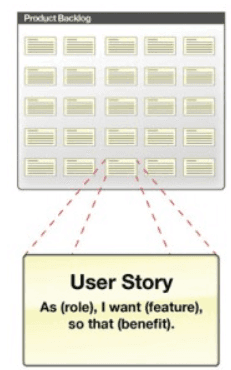
The Scrum work process starts with a product owner. The product owner, in collaboration with the team, develops user stories or requirements of the project. A product backlog is a prioritized list of all the product requirements or user stories that a scrum team maintains for a product.
In Scrum, features are known as user stories and are written from the end-user perspective. A Product owner decides which user stories or items make it into the product backlog.
After the product backlog creation is finished, the next step is to Release the backlog.
[ Check out What is Scrum Framework? ]
2. Release Backlog
Based on the product roadmap developed, in collaboration with the product owner, the team decides how to group user stories into releases. The objective of the release is to deliver a subset of the product backlog known as the release backlog.
After determining which user stories will go into a particular release, the development team estimates the time duration needed to complete each item. Once the release planning has been completed, the user stories are then selected for a sprint.
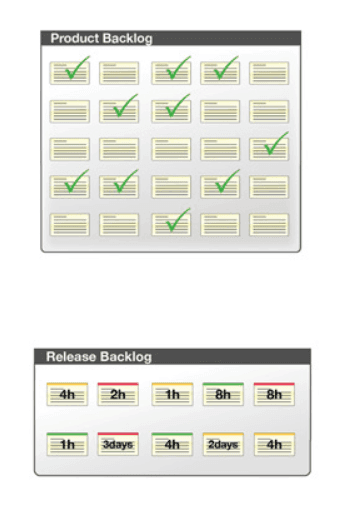
3. Sprint Backlog Creation
A Sprint is a predefined timeframe within which the team performs a set of tasks from the Backlog. The duration of each Sprint lasts 2-4 weeks. Each Sprint takes a manageable chunk of the release backlog and gets it a ship-steady state. A set of product backlog items that must be delivered within a single sprint iteration is called a Sprint backlog.
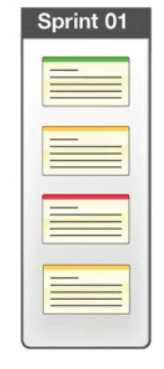
Once the sprint backlog is determined, the team then divides each user story into a task. And then in each Sprint, the product is developed.
[ Check out the Principles of Scrum ]
4. Working on Sprint and Scrum Meetings
After the user stories for the current phase are selected, the development process begins. For tracking the current working process, a task board is commonly used, which represents particular user stories with a description of tasks needed for implementation.
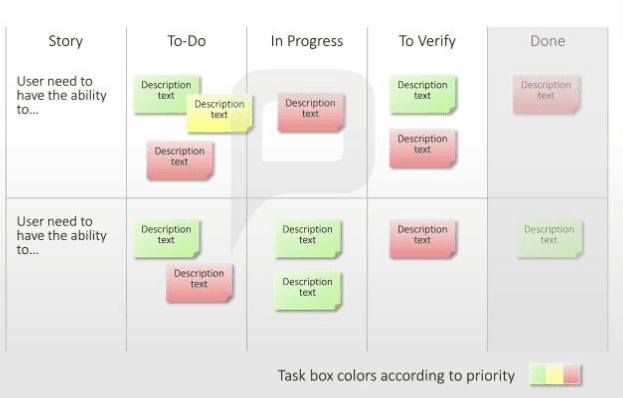
After the code is written, it is integrated into the system, and daily scrums are held. Daily scrums or daily stand-ups are conducted by development teams to monitor the progress made towards the Sprint Goal and progress performed in the Sprint Backlog, to adjust the plan for the rest of the Sprint.
Each of the meetings is held timeboxed in about 15 minutes. The main goal of these meetings is to get accurate information about the current project status.
Everyone in the team must communicate with all the members and tell them about their tasks finished, what tasks they want to accomplish next, and what problems or impediments they faced during the work.
Next, update your sprint burndown chart.
[ Learn What is Scrum Methodology? ]
5. Burndown Charts
The progress of the team is tracked through a burndown chart. It provides a day-by-day measure of the work that remains in a given sprint or release.
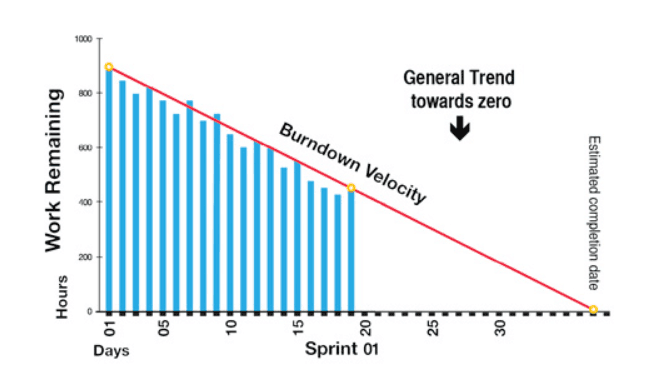
The slope of the graph (burndown velocity) is calculated by comparing the number of hours worked to the original project estimation and displays the average rate of productivity for each day. This chart helps to conclude the current speed of work. Depending on those conclusions, the number of user stories for the next Sprint can be changed.
6. Testing and Product Demonstration
If all the user stories are completed then the sprint backlog is also completed, which means a sprint completion. A sprint review is held after sprint completion, where the working software is demonstrated and presented for acceptance to the customers. Based on their feedback, stakeholders decide any further changes be enacted in the project.
7. Retrospective and Next Sprint Planning
Finally, the team then conducts a sprint retrospective to ask themselves questions about what could be done better to improve themselves. The team primarily looks at three things during a retrospective:
- What went well?
- What did not go well?
- What should be done differently?
The time duration of retrospectives lasts max of 90 minutes. They help us to incorporate continuous changes into sprint cadence and team.
At last, the team velocity is updated and it acts as information radiators to display the status and progress of the project, which again make their way back to user stories, and then the whole cycle repeats until the project is completed.
| Learn Top Scrum Interview Questions and Answers that help you grab high-paying jobs |
Conclusion
Scrum is a useful methodology that is simple to understand. The major distinct features that make Scrum popular from traditional approaches are agility and continuous progress. Scrum workflow regularly assists the team members with the changes/adjustments to be implemented and boosts the project management process.
This article intends to provide clear knowledge of the Scrum Workflow process. We hope the information shared is helpful. If you have any questions, feel free to drop a comment below and our subject matter experts will help you with the possible solution.
 On-Job Support Service
On-Job Support Service
Online Work Support for your on-job roles.

Our work-support plans provide precise options as per your project tasks. Whether you are a newbie or an experienced professional seeking assistance in completing project tasks, we are here with the following plans to meet your custom needs:
- Pay Per Hour
- Pay Per Week
- Monthly
| Name | Dates | |
|---|---|---|
| Scrum Training | Jan 10 to Jan 25 | View Details |
| Scrum Training | Jan 13 to Jan 28 | View Details |
| Scrum Training | Jan 17 to Feb 01 | View Details |
| Scrum Training | Jan 20 to Feb 04 | View Details |

Madhuri is a Senior Content Creator at MindMajix. She has written about a range of different topics on various technologies, which include, Splunk, Tensorflow, Selenium, and CEH. She spends most of her time researching on technology, and startups. Connect with her via LinkedIn and Twitter .














